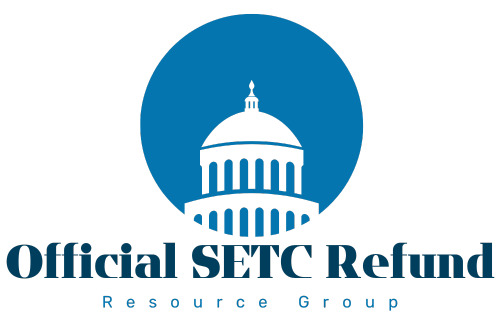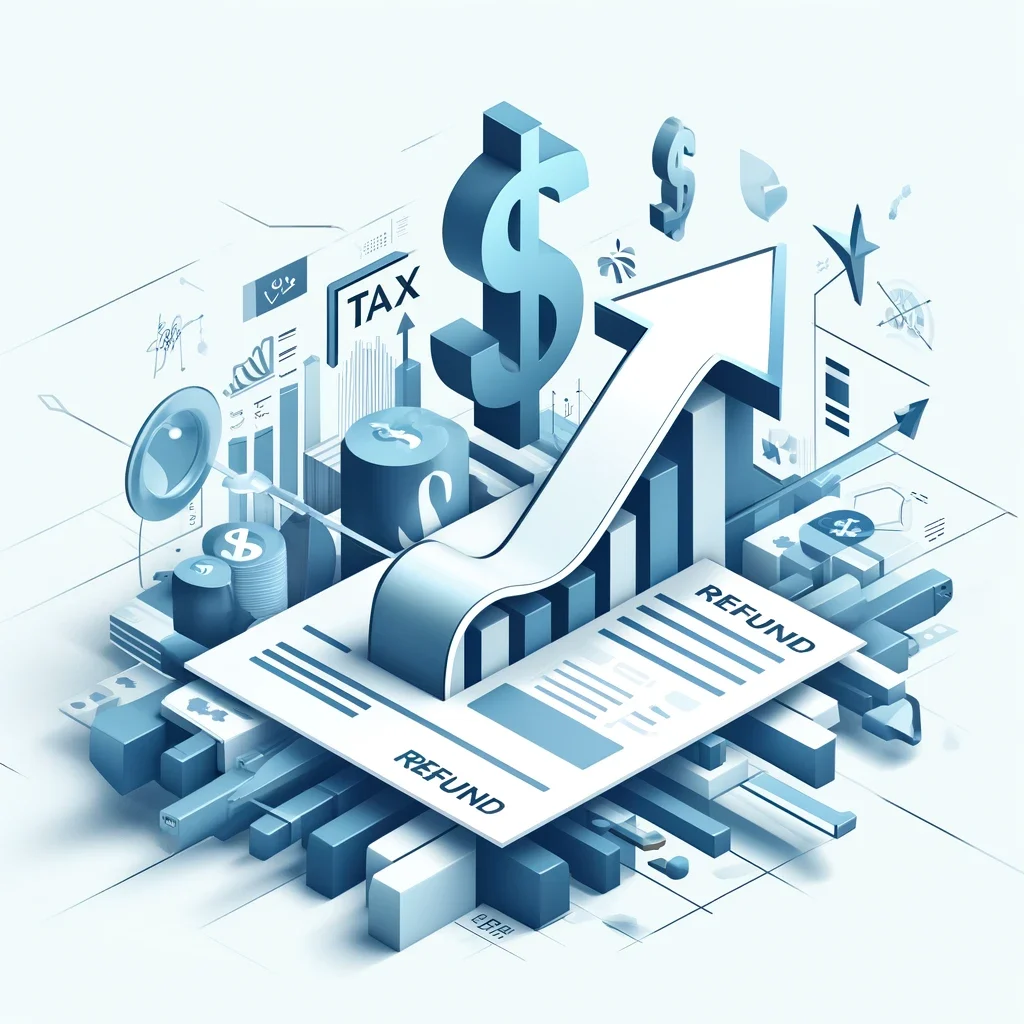Table of Contents
Note: For a comprehensive overview of the Self-Employed Tax Credit program that integrates the information provided in this FAQ with the broader context of the entire initiative, please click here.
Eligibility
What is the SETC tax credit program?
The SETC (Self-Employed Tax Credit) is a colloquial term that refers to the paid sick leave and family leave tax credits for self-employed individuals introduced under the Families First Coronavirus Response Act (FFCRA). Initially, the FFCRA focused on employers with W-2 employees, but in December 2020, Congress passed the Coronavirus Aid, Relief, and Economic Security (CARES) Act, which expanded the FFCRA to cover self-employed individuals.
What is the FFCRA?
The Families First Coronavirus Response Act (FFCRA) was passed in 2020 and was one of the earliest pieces of legislation designed to help small business owners afford the sick leave their employees had to take because of COVID-19. The FFCRA originally focused only on employees of certain small businesses but was expanded in 2021 to cover self-employed individuals during the COVID-19 pandemic. Check out this article if you’re interested in learning more about the FFCRA.
>> Access the Online Eligibility Checker and Refund Calculator Here
What is the difference between SETC and FFCRA?
The “SETC” (Self-Employed Tax Credit) is a colloquial term that refers to the paid sick leave and family leave tax credits for self-employed individuals introduced under the FFCRA (Families First Coronavirus Response Act). There is no distinguishing difference besides SETC is for self-employed individuals and FFCRA for employees.
Is there a reason why I cannot find information about the Self-Employed Tax Credit (SETC) on the IRS’ website?
The “SETC” (Self-Employed Tax Credit) is a colloquial term that refers to the paid sick leave and family leave tax credits for self-employed individuals introduced under the FFCRA (Families First Coronavirus Response Act). You will need to start by searching for the FFCRA and find the section indicating how it also applies to self-employed individuals.
Do I have to be self-employed to file for the tax credit refund?
Yes. This tax credit is for self-employed individuals, small business owners, freelancers, partners in a partnership that are subject to self-employment taxes, and 1099 contractors only.
For more information on what it means to be self-employed, click here.
Can I claim SETC tax credits if I am also a W2 employee?
Yes – you can claim the SETC Tax Credit under the Families First Coronavirus Response Act (FFCRA) even if you also have income as a W-2 employee, as long as you meet certain eligibility criteria.
The key points are:
- The FFCRA provides refundable tax credits for self-employed individuals for COVID-19 related sick and family leave. Specifically, it “allows a refundable income tax credit for 100% of the qualified family leave amounts of self-employed individuals, subject to a specified formula for determining the leave amounts.” (Link to Congressional Bill)
- To be eligible, you must have self-employment income and have filed a Schedule SE (Form 1040) showing your net earnings from self-employment. The IRS instructions state: “You must have a positive net income from self-employment on your IRS Form 1040 Schedule SE for either 2020, or 2021. This shows you were actively self-employed during the qualifying period.” See IRS instructions
- The SETC is claimed as an income tax credit, separate from payroll taxes. Having W-2 wages does not directly impact eligibility. Congress.gov resource
- Self-employed individuals can claim the credit even if they also have another job as an employee, as long as they meet the self-employment income requirements on their Schedule SE. IRS FAQ
So in summary, based on the government sources, having W-2 income in addition to self-employment income does not disqualify you from claiming the SETC credits, as long as you meet the eligibility criteria related to your self-employment net earnings. The SETC is based on your self-employment leave amounts and claimed on your income tax return. Congressional Bill Information
Who qualifies for the SETC tax credits?
To qualify for the SETC, you must meet the following criteria:
- Identify as a self-employed individual, such as a sole proprietorship, independent business owner, 1099 contractor, freelancer, gig worker, single-member LLC taxed as a Sole-Proprietorship, or general partner of a partnership.
- Have filed a Schedule SE of IRS Tax Form 1040 in 2020 and/or 2021 with positive net income and paid self-employment tax on your earnings for the years 2019 and/or 2020 and or 2021.
- Have missed work due to COVID-19-related issues.
>> Access the Online Eligibility Checker and Refund Calculator Here
If all of my income is run through a C or S Corp, do I qualify for the SETC tax credits?
C or S Corporation income is not considered self-employed income, so you would not qualify for SETC.
What is the IRS’ definition of being considered “self-employed”?
Generally, you are self-employed if any of the following apply to you:
- You carry on a trade or business as a sole proprietor or an independent contractor.
- You are a member of a partnership that carries on a trade or business.
- You are otherwise in business for yourself (including a part-time business or a gig worker).
Can a partner in a partnership claim the tax credits?
Maybe. A partner in a partnership is a self-employed individual if the partner’s distributive share constitutes net earnings from self-employment or if the partner receives guaranteed payments for services. If the partner is a self-employed individual and is not able to work for reasons related to COVID-19, the partner is eligible for the tax credits.
Is this similar to the PPP program?
The PPP (Paycheck Protection Program) and SETC (Families First Coronavirus Response Act) are two distinct initiatives responding to the economic impact of the COVID-19 pandemic. PPP assists small businesses by providing loans with the potential for loan forgiveness. SETC is not a loan but a credit on taxes individuals have already paid. While PPP supported businesses, SETC focused on helping individuals.
Processing the Refund
How long before I will receive my cash refund?
Funding Advance: If you opt for the no-credit-check, no additional charge funding advance, funds are typically deposited into your account within 15-20 business days.
IRS: If you opt to wait for the IRS, funds are disbursed within 5-6 months on average.
It typically takes 12-16 weeks to complete the process and receive your cash refund once all necessary paperwork is received and processed.
Will I get a check or will the refund be deposited in my account?
Refunds sent by the IRS come in the form of a check while funding advances are directly deposited into your bank account.
Why haven’t I heard of the SETC tax credits before?
Initially, the SETC focused on employers with W-2 employees and the expansion to cover the self-employed was not widely publicized, resulting in over 80% of self-employed individuals being unaware they’re entitled to these tax credits.
Does filing for SETC tax credits impact filing my 2023 income taxes?
Filing for the SETC tax credit will not impact your 2023 income taxes, as it involves amending your 2020 and/or 2021 tax returns. For more information on how refundable tax credits work, visit this guide.
Claiming the Credit
How much of a tax credit can I expect to receive?
The SETC Tax credit can be up to $32,220, based on your self-employed net earnings in 2020 and 2021. Detailed information on how these figures are calculated is available on the IRS FAQs page.
How is the credit amount determined?
- Qualified Sick Leave Amount: If you were unable to work due to your own COVID symptoms or quarantine/isolation orders, you may receive credits for up to 10 days of sick leave between April 1, 2020 and March 31, 2021, and another 10 days between April 1, 2021 and September 30, 2021. The credit is 100% of your average daily self-employment income, up to $511 per day, for a maximum of $5,110 in each period.
- Qualified Family Leave Amount: If you had to care for a child whose school/childcare closed due to the pandemic, or care for someone in COVID quarantine/isolation, you may be eligible for credits for up to 50 days of family leave between April 1, 2020 and March 31, 2021, and up to 60 days between April 1, 2021 and September 30, 2021. The credit is 67% of your average daily self-employment income, up to $200 per day, for a total of $22,000 for both periods.
If eligible for both sick leave and family leave credits, you may claim a combined maximum of 60 days, for total Self-Employed Tax Credits of up to $32,220. However, the credit is reduced by any COVID-related sick/family leave wages received from an employer.
The deadline to claim the SETC for your 2020 amended tax return is April 15, 2024. For 2021 returns, the amendment deadline is April 15, 2025.
What qualifies as a reason for claiming SETC?
To qualify for SETC tax credits, you must have missed self-employment work due to COVID-related issues. The specific qualifications are outlined in this article.
What dates are eligible for SETC tax credits?
The SETC covers the days you were unable to perform self-employment work from April 1, 2020, to September 30, 2021.
Are there any limitations to the SETC?
Yes, there are several limitations regarding who can receive the SETC, what reductions might apply, and eligibility criteria, all of which are described in detail on the IRS’s explanation of tax credits.
Do weekends count as days I can claim?
Yes, if you missed self-employment work that you would have normally worked on a weekend, then you can claim weekends as days missed.
What if I have not filed the 2020 or 2021, can I still receive the SETC?
Yes, you can still receive the SETC by filing your original 2020 and/or 2021 tax returns and including the SETC.
What if I already filed my taxes for 2020 & 2021?
You must file an amended tax return for each applicable year to claim the SETC tax credits. Visit this page to Calculate Your Refund and our partnered accounting firm will take care of the amendment if you qualify.
Why do I have to have positive net earnings to qualify for SETC income tax credit?
Positive net earnings are a requirement from the IRS to qualify for the SETC income tax credit. Positive net earnings indicate taxable income against which a credit can be applied.
If we filed a joint return and my spouse or partner is also self-employed, can we each qualify for the SETC?
Yes, if both of you are self-employed, you could each qualify for up to the maximum amount (under the right circumstances) of $32,220.
Are there any deadlines for claiming the SETC tax credits?
Yes, the deadline to amend your 2020 and/or 2021 tax return for claiming or adjusting SETC credits is three years from the original due date of the return or within two years from the date you paid the tax, whichever is later. The deadline for filing for the SETC tax credits for your 2020 tax return is April 15, 2024, and applications for 2021 (or a mix of 2020 and 2021) are due April 15, 2025. Note that the IRS is allowing the 2020 claimable period from the expired 2020 tax year to be used during 2021. More information can be found here.
Self-Employed Tax Credit Documentation
What documentation do I need to provide?
You need to provide your 2020, and 2021 tax returns, including your Schedule C and a copy of your driver’s license for identification.
What is the Form 1040 SE?
IRS Form 1040 Schedule SE is used to calculate an individual’s total self-employment taxes, which include Social Security and Medicare taxes, similar to those withheld for W-2 employees.
What is the Form 1040-X?
IRS Form 1040-X is an “Amended U.S. Individual Income Tax Return.” It is used to make corrections or claim credits not originally claimed on your previously filed tax return.
What is Form 7202?
IRS Form 7202 is used by self-employed individuals to claim sick and family leave tax credits under the FFCRA for COVID-19-related reasons. This form details the individual’s eligibility and tax credit calculations.
What is a Form 1040?
IRS Form 1040 is the standard individual income tax form in the United States, used by taxpayers to report their annual income and calculate their tax liability.
What is a Form 1040X?
IRS Form 1040X is used to amend previously filed individual tax returns. It allows taxpayers to correct errors and make other adjustments to their tax returns after they have been filed.
What is a Schedule SE Form 1040?
Schedule SE (Form 1040) is used by self-employed individuals to calculate the self-employment tax owed, covering Social Security and Medicare taxes.
What is a Schedule C?
Schedule C (Form 1040) is used by sole proprietors and single-member LLCs to report their business income and expenses. The net profit or loss from this schedule is used to determine the taxpayer’s overall taxable income.
What is a Form 8821?
IRS Form 8821 is a Tax Information Authorization form that allows a third party, such as a tax professional, to access your tax information for a specified period. It is used for purposes like accurately calculating and filing for SETC credits but does not authorize representation before the IRS.
Note: For a comprehensive overview of the Self-Employed Tax Credit program that integrates the information provided in this FAQ with the broader context of the entire initiative, please click here.
Disclaimer:
The information contained in this post (“Document”) is for general informational purposes only and is not intended to be financial or legal advice. While the information presented is believed to be accurate at the time of publication, laws and regulations are subject to change. You should not take any action based on the information in this Document without seeking professional advice from a qualified financial advisor or attorney. Gig Workers Solutions makes no warranties or representations of any kind, express or implied, about the completeness, accuracy, or reliability of the content of this Document. Gig Workers shall not be liable for any damages arising out of or in connection with the use of this Document/post or any others on this its website.

A dedicated financial consultant with extensive expertise in tax strategies for self-employed individuals including freelancers, gig workers, and independent contractors. With a focus on maximizing tax benefits, Richard expertly guides clients through the nuances of the Self-Employed Tax Credit, ensuring they leverage every available opportunity to reduce their tax liabilities.




